This 50 step Google Penalty Recovery checklist will guide you through the essential actions needed to restore your website’s rankings after a Google penalty. From identifying the type of penalty to removing toxic backlinks, fixing on-page issues, and submitting reconsideration requests, these tasks will help you recover and improve your site’s SEO performance. Whether it’s a manual or algorithmic penalty, following these steps ensures a methodical approach to getting your site back on track. Perfect for SEO professionals and website owners!
| Task | Details |
|---|---|
| 1. Identify the Penalty Type | Use Google Search Console to determine if it’s a manual or algorithmic penalty. |
| 2. Check for Manual Actions | Go to Google Search Console and look for any manual action notifications. |
| 3. Analyze Algorithm Updates | Investigate recent Google algorithm updates (e.g., Panda, Penguin) that may have caused ranking drops. |
| 4. Audit Your Backlinks | Use tools like Ahrefs or SEMrush to check for toxic or spammy backlinks. |
| 5. Disavow Bad Links | Use Google’s Disavow Tool to remove harmful backlinks that are violating Google’s guidelines. |
| 6. Fix On-Page Issues | Review and fix issues like keyword stuffing, thin content, or hidden text on your website. |
| 7. Remove Duplicate Content | Eliminate duplicate or plagiarized content that might be harming your rankings. |
| 8. Improve Content Quality | Update content to meet E-E-A-T (Experience, Expertise, Authoritativeness, Trustworthiness) standards. |
| 9. Fix Keyword Cannibalization | Identify and resolve cases where multiple pages are competing for the same keyword. |
| 10. Check for Unnatural Links | Identify any paid or unnatural links and remove them. |
| 11. Submit Reconsideration Request | If you’ve corrected manual action issues, submit a reconsideration request to Google. |
| 12. Audit Technical SEO | Check your site for technical SEO issues, like broken links, slow page speed, or improper redirects. |
| 13. Improve Mobile-Friendliness | Ensure your website is fully optimized for mobile devices. |
| 14. Fix Structured Data Errors | Correct any errors in your schema markup that might cause penalties. |
| 15. Optimize Page Speed | Use tools like Google PageSpeed Insights to improve site speed. |
| 16. Update Meta Titles and Descriptions | Ensure titles and meta descriptions are optimized and not overstuffed with keywords. |
| 17. Resolve Crawl Issues | Use Google Search Console to check and fix crawl errors. |
| 18. Submit Updated XML Sitemap | Ensure your sitemap is updated and submitted to Google for better crawling. |
| 19. Monitor Google Search Console Regularly | Keep an eye on Google Search Console for any new issues or notifications. |
| 20. Check for Thin Content | Identify and improve thin or low-quality pages that provide little value to users. |
| 21. Improve User Experience (UX) | Enhance site usability, navigation, and accessibility to improve user satisfaction. |
| 22. Check for Excessive Ads | Reduce the number of intrusive ads that can negatively impact user experience and rankings. |
| 23. Resolve Redirect Chains | Fix any redirect chains that may slow down site performance or affect rankings. |
| 24. Optimize Internal Linking | Improve internal linking structure to help Google better understand your site’s content hierarchy. |
| 25. Avoid Cloaking | Ensure that you are not showing different content to users and search engines, which violates Google’s guidelines. |
| 26. Ensure Proper HTTPS Implementation | Verify that your site’s SSL certificate is correctly installed and working across all pages. |
| 27. Check for Over-Optimization | Avoid over-optimization tactics like keyword stuffing or unnatural link building. |
| 28. Use Social Signals | Improve your social media presence to show engagement and build trust. |
| 29. Monitor User Engagement | Track metrics like bounce rate, time on site, and pages per session to improve user experience. |
| 30. Remove or Revise Low-Quality Pages | Delete or revamp pages with poor-quality content that may trigger penalties. |
| 31. Check for Hacked Content | Ensure your site hasn’t been hacked or injected with malicious content. |
| 32. Clean Up Site Errors (404, 500) | Fix 404 and 500 errors to ensure smooth crawling and user experience. |
| 33. Improve Core Web Vitals | Focus on metrics like Largest Contentful Paint (LCP), First Input Delay (FID), and Cumulative Layout Shift (CLS). |
| 34. Avoid Hidden Text | Ensure no hidden text or links are being used to manipulate search rankings. |
| 35. Remove Spammy User-Generated Content | Moderate user-generated content like comments or forum posts to avoid penalties. |
| 36. Avoid Aggressive Pop-ups | Remove intrusive interstitials or pop-ups that negatively impact user experience on mobile devices. |
| 37. Fix Schema Markup Issues | Ensure your structured data is accurate and free from errors. |
| 38. Ensure Content is Original | Make sure all content on your site is original and not copied from other sources. |
| 39. Check Backlink Velocity | Avoid sudden spikes in backlinks that can appear unnatural and trigger penalties. |
| 40. Diversify Anchor Text | Use varied anchor text in your backlinks to avoid appearing manipulative. |
| 41. Review Affiliate Links | Ensure affiliate links are nofollowed to avoid penalties for unnatural linking. |
| 42. Fix Overused Exact Match Keywords | Avoid using exact match keywords excessively in content and backlinks. |
| 43. Use Google Analytics to Track Progress | Monitor organic traffic and recovery efforts with Google Analytics. |
| 44. Implement Robots.txt Correctly | Ensure that your robots.txt file is not blocking essential pages from being crawled. |
| 45. Avoid Duplicate Meta Tags | Ensure that each page has unique meta titles and descriptions. |
| 46. Rebuild Natural Backlinks | Focus on building high-quality, natural backlinks from reputable sources. |
| 47. Reduce Image File Size | Compress images to improve site speed and user experience. |
| 48. Perform Regular Content Audits | Regularly audit your site’s content to identify any low-quality or outdated pages. |
| 49. Check Page Indexing in Google Search Console | Ensure that your most important pages are indexed correctly. |
| 50. Monitor Recovery Progress | Track your progress and ranking improvements after taking corrective action. |





